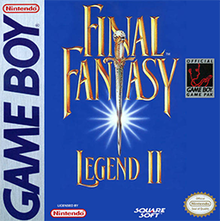Square Co., Ltd. was a Japanese video game development studio and publisher. It was founded in 1986 by Masafumi Miyamoto, who spun off part of his father's electronics company Den-Yu-Sha. Among its early employees were designers Hironobu Sakaguchi, Hiromichi Tanaka, Akitoshi Kawazu and Koichi Ishii, artist Kazuko Shibuya, programmer Nasir Gebelli, and composer Nobuo Uematsu. Initially focusing on action games, the team saw popular success with Final Fantasy in 1987. A role-playing video game, it became the first in a franchise of the same name. Later notable staff included directors Yoshinori Kitase and Takashi Tokita, designer and writer Yasumi Matsuno, artists Tetsuya Nomura and Yusuke Naora, and composers Yoko Shimomura and Masashi Hamauzu.
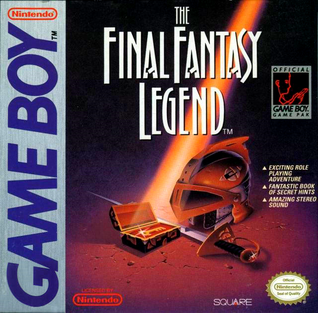
The Final Fantasy Legend, originally released in Japan as Makai Toushi Sa・Ga is a role-playing video game developed and published by Square for the Game Boy. It was originally released in Japan in December 1989 and North America in September 1990. It is the first game in the SaGa series and the first role-playing video game for the system. Square translated the game into English for worldwide release and renamed it, linking it with the Final Fantasy series to improve marketing. Sunsoft re-released it in North America during 1998; Square followed with a Japan-exclusive remake released for the WonderSwan Color and mobile phones in 2002 and 2007 respectively, it was also ported to the Nintendo Switch in 2020 and later ported to Android, iOS and Microsoft Windows in 2021.

The Mana series, known in Japan as Seiken Densetsu, is a high fantasy action role-playing game series created by Koichi Ishii, with development formerly from Square, and is currently owned by Square Enix. The series began in 1991 as Final Fantasy Adventure, a Game Boy handheld side story to Square's flagship franchise Final Fantasy. The Final Fantasy elements were subsequently dropped starting with the second installment, Secret of Mana, in order to become its own series. It has grown to include games of various genres within the fictional world of Mana, with recurring stories involving a world tree, its associated holy sword, and the fight against forces that would steal their power. Several character designs, creatures, and musical themes reappear frequently.

SaGa (サガ) is a series of science fantasy role-playing video games by Square Enix. The series originated on the Game Boy in 1989 as the creation of Akitoshi Kawazu at Square. It has since continued across multiple platforms, from the Super NES to the PlayStation 2. The series is notable for its emphasis on open world exploration, non-linear branching plots, and occasionally unconventional gameplay. This distinguishes the games from most of Square's other franchises.

Final Fantasy Crystal Chronicles is an action role-playing video game developed by The Game Designers Studio and published by Nintendo for the GameCube. It was released in 2003 in Japan and 2004 in North America, Europe and Australia. A remastered version for Nintendo Switch, PlayStation 4, Android, and iOS was released in August 2020. A spin-off of the Final Fantasy series and beginning of the series of the same name, Crystal Chronicles was the first title in the franchise to be released for a Nintendo home console since Final Fantasy VI in 1994.
Kenji Ito, also known by the nickname Itoken (イトケン), is a Japanese video game composer and musician. He is best known for his work on the Mana and SaGa series, though he has worked on over 30 video games throughout his career as well as composed or arranged music for over 15 other albums, concerts, and plays. He learned to play several instruments at a young age, and joined Square directly out of college as a composer in 1990 at the advice of a professor. He worked there for over a decade, composing many of his best-known scores. In 2001, he left Square to become a freelance composer, but has since continued to collaborate with the company.

Unlimited Saga is a 2002 role-playing video game developed and published by Square for the PlayStation 2 as the ninth game in the SaGa series. It was released in 2002 in Japan and 2003 in North America and Europe; its European version was published by Atari Europe. The story follows seven characters as they explore mysteries connected to the Seven Wonders, artifacts left by an ancient civilization said to be capable of triggering a golden age. Battles carry over the skill-based levelling systems and nonlinear structure of earlier SaGa titles, with an exploration structure similar to a board game.

SaGa Frontier is a 1997 role-playing video game developed by Square for the PlayStation. The game was published by Sony Computer Entertainment (SCEA) in North America on March 24, 1998. It is the seventh game in the SaGa series, and the first to be released on the PlayStation. It is also the first in the series to be released under the SaGa brand outside Japan; previous overseas releases had used the Final Fantasy brand instead. A remastered version featuring additional characters, events and features was released on April 15, 2021 for Android, iOS, Nintendo Switch, PlayStation 4 and Windows.
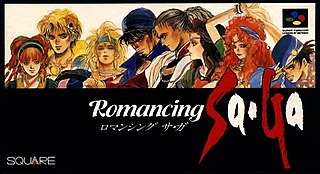
Romancing SaGa is a 1992 role-playing video game developed and published by Square for the Super Famicom. It is the fourth entry in the SaGa series. It was subsequently released for the WonderSwan Color in 2001 and mobile phones in 2009. A remake for the PlayStation 2, subtitled Minstrel Song in Japan, was released in both Japan and North America in 2005 by Square Enix. A remaster of Minstrel Song was released worldwide in 2022 for Android, iOS, Nintendo Switch, PlayStation 4, PlayStation 5 and Windows.

Final Fantasy Legend III, known in Japan as SaGa 3: Jikuu no Hasha, is a role-playing video game developed and published by Square for the Game Boy. The third entry in the SaGa series, it was released in Japan in 1991 and in North America in 1993. A remake for the Nintendo DS was released in 2011 by Square Enix, remaining exclusive to Japan. The Game Boy version was later ported to the Nintendo Switch and released worldwide by Square Enix in 2020, with later ports to Android, iOS and Microsoft Windows in 2021.

Akitoshi Kawazu is a Japanese game designer, director, producer and writer. After joining Square in 1985, he went on to become a central developer for the first two Final Fantasy titles, then acted as creator and lead developer for the SaGa series.

Romancing SaGa 3 is a 1995 role-playing video game developed and published by Square for the Super Famicom. The sixth entry in the SaGa series, it was also the last developed for the platform. Originally released on the Super Famicom system in Japan on November 11, 1995, the game was released on the Virtual Console in Japan for Wii on September 21, 2010 and Wii U on February 26, 2014.

Romancing SaGa 2 is a 1993 role-playing video game developed and published by Square for the Super Famicom. It is the fifth entry in the SaGa series. It received an expanded port for Japanese mobile devices from Square Enix in 2011. This version was remastered by ArtePiazza and released worldwide between 2016 and 2017 by Square Enix for Android, iOS, PlayStation Vita, Nintendo Switch, PlayStation 4, Windows and Xbox One.
SaGa is a series of science fiction role-playing video games produced by Square, now Square Enix. The series originated on the Game Boy in 1989 as the creation of Akitoshi Kawazu. It has since continued across multiple platforms, from the Super Nintendo Entertainment System to the PlayStation 2, and like the Final Fantasy series, the story in each SaGa game is independent of its counterparts. The music of the SaGa series consists of musical scores and arranged albums from various composers. Some of these composers have created soundtracks and pieces for other Square Enix franchises including the Final Fantasy series and Mana series. The SaGa series is divided up between the original series, released as the Final Fantasy Legend series in North America, the Romancing SaGa series, the SaGa Frontier series, and Unlimited SaGa.
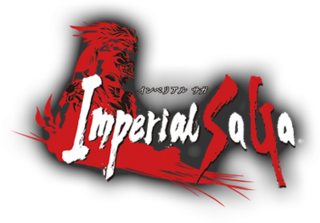
Imperial SaGa is a role-playing browser game developed by Think & Feel for web browsers. The eleventh installment in the SaGa series, the game was published by Square Enix in 2015. The service ceased in 2019. Designed as part of the series' 25th anniversary celebrations, it was developed with the supervision of series creator Akitoshi Kawazu.

SaGa: Scarlet Grace is a role-playing video game co-developed by Square Enix and Studio Reel. The twelfth entry in the SaGa series, the game was published by Square Enix in 2016 for the PlayStation Vita. An expanded port subtitled Ambitions was released in 2018 in Japan and in 2019 worldwide for Android, iOS, Nintendo Switch, PlayStation 4 and Windows. The story follows four characters pursuing separate missions across the splintered remains of a dissolved Empire; central to the plot is the Firebringer, a rebellious deity defeated during the Empire's height. Gameplay focuses on the protagonists exploring the nonlinear world, taking part in turn-based battles where skill growth depends on chosen actions.
Final Fantasy Crystal Chronicles is a series of video games within the Final Fantasy franchise developed by Square Enix. Beginning in 2003 with the game for the GameCube, the series has predominantly been released on Nintendo gaming hardware and covers multiple genres, including action role-playing. The Crystal Chronicles series takes place in an unnamed world inhabited by four tribes. Recurring themes include creating objects from memory and the importance of family. The gameplay, which has always been aimed at as wide an audience as possible within a genre, generally involves either multiple players or a large group working together.
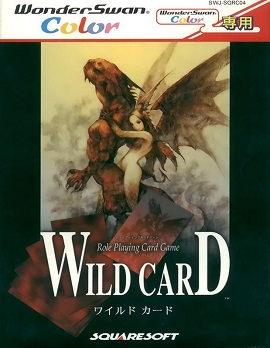
Wild Card is a 2001 role-playing video game developed and published by Square for the WonderSwan Color. It was Square's first original title for the platform. The player takes on the role of a protagonist going through a series of freely-available scenarios, building the world based on character interactions. The world, characters and turn-based battle system are represented using cards.

SaGa: Emerald Beyond is a 2024 role-playing video game developed and published by Square Enix. An entry in the SaGa series, it was released for Android, iOS, Nintendo Switch, PlayStation 4, PlayStation 5, and Windows. The story follows six protagonists as they traverse multiple worlds connected to a realm called the Beyond. The player explores these worlds completing quests and unlocking new events, with the turn-based combat focusing on timeline manipulation and skill growth dependant on in-game actions.
